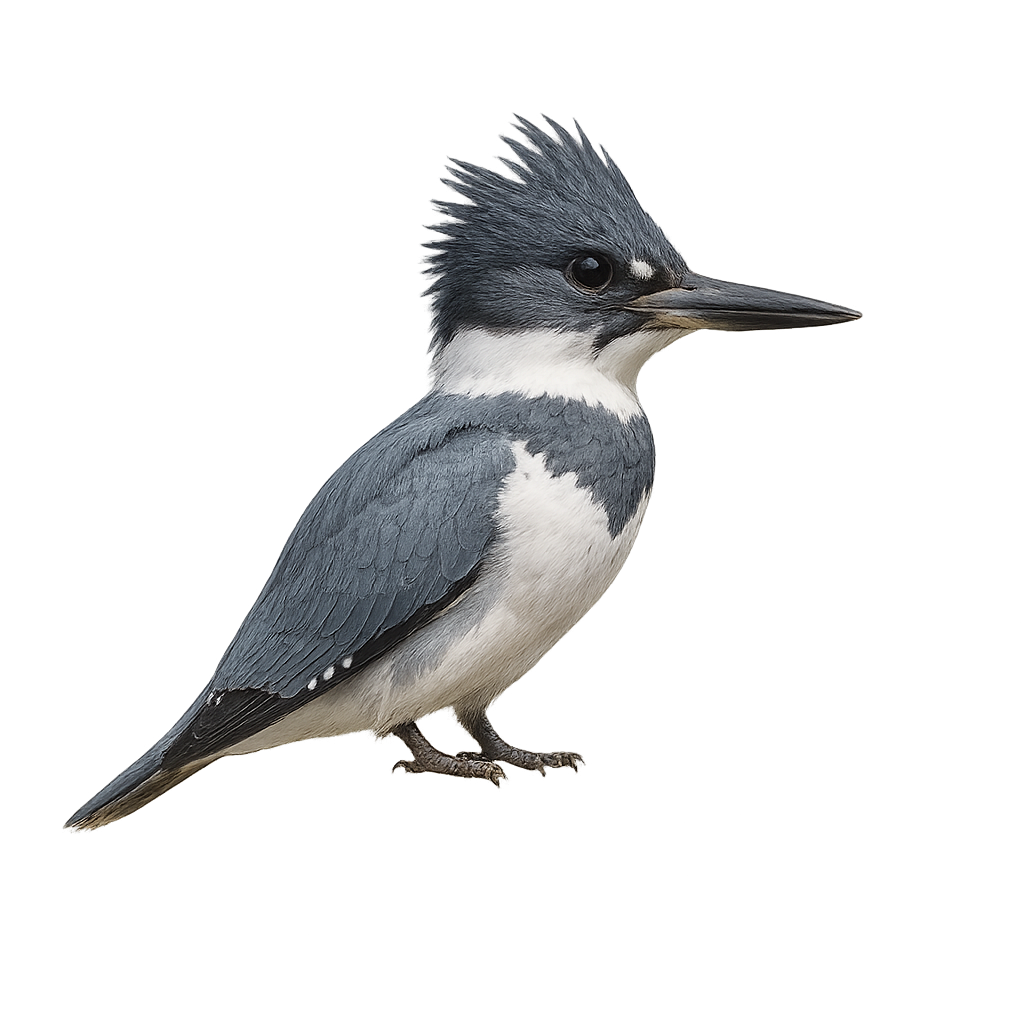Your wildlife photography guide.
Explore the belted kingfisher in detail, study its behavior, prepare your shots.
Where to observe and photograph the belted kingfisher in the wild
Learn where and when to spot the belted kingfisher in the wild, how to identify the species based on distinctive features, and what natural environments it inhabits. The WildlifePhotographer app offers tailored photography tips that reflect the belted kingfisher’s behavior, helping you capture better wildlife images. Explore the full species profile for key information including description, habitat, active periods, and approach techniques.
Belted kingfisher
Scientific name: Megaceryle alcyon

IUCN Status: Least Concern
Family: ALCEDINIDAE
Group: Birds
Sensitivity to human approach: Suspicious
Minimum approach distance: 50 m
Courtship display: April to June
Incubation: 22-24 jours
Hatchings: May to July
Habitat:
Lakes, rivers, marshes, and wetlands of North America, especially in water-rich environments
Activity period :
Primarily active during the day, with peak activity in the morning and late afternoon.
Identification and description:
The Belted Kingfisher is a medium-sized aquatic bird, easily recognized by its bright plumage and vivid colors. It measures about 28 cm in length and weighs between 100 and 150 g. Its back is a brilliant metallic blue, while its belly is white with orange patches on the chest. It has a long, straight, pointed bill, suited for catching fish and other aquatic prey. The Belted Kingfisher is an excellent diver, often perching on branches or electrical wires above the water before diving at high speed to catch its prey. It primarily lives in rivers, lakes, marshes, and coastal areas of North America, from southern Canada to Mexico. These birds are solitary and defend their territory by emitting sharp calls. While its population remains relatively stable, it is threatened by habitat loss due to water pollution and wetland destruction.
Recommended lens:
400 mm – adjust based on distance, desired framing (portrait or habitat), and approach conditions.
Photography tips:
Use a telephoto lens to photograph the Belted Kingfisher, especially when it dives into the water or perches on branches near the water. The soft light of the morning or evening is ideal for obtaining sharp and well-lit photos. Be discreet and respect their space to avoid disturbing their natural behavior, especially during the breeding season.
The WildlifePhotographer App is coming soon!
Be the first to explore the best nature spots, track rutting seasons, log your observations, and observe more wildlife.
Already 1 432 wildlife lovers subscribed worldwide

